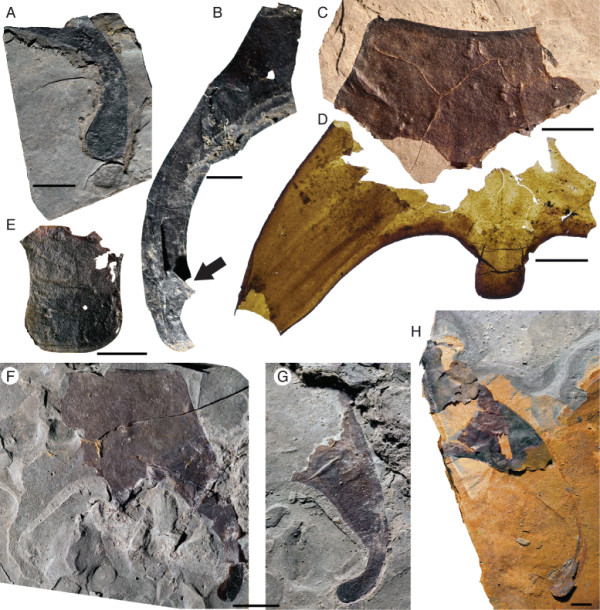Journal reference: James C. Lamsdell, Derek E. G. Briggs, Huaibao P. Liu, Brian J. Witzke, Robert M. McKay. The oldest described eurypterid: a giant Middle Ordovician (Darriwilian) megalograptid from the Winneshiek Lagerstätte of Iowa. BMC Evolutionary Biology, 2015; 15 (1) DOI: 10.1186/s12862-015-0443-9
Eurypterids are a diverse group of chelicerates known from ~250 species with a sparse Ordovician record currently comprising 11 species; the oldest fully documented example is from the Sandbian of Avalonia. The Middle Ordovician (Darriwilian) fauna of the Winneshiek Lagerstätte includes a new eurypterid species represented by more than 150 specimens, including some juveniles, preserved as carbonaceous cuticular remains. This taxon represents the oldest described eurypterid, extending the documented range of the group back some 9 million years.
Results
The new eurypterid species is described as Pentecopterus decorahensis gen. et sp. nov.. Phylogenetic analysis places Pentecopterus at the base of the Megalograptidae, united with the two genera previously assigned to this family by the shared possession of two or more pairs of spines per podomere on prosomal appendage IV, a reduction of all spines except the pair on the penultimate podomere of appendage V, and an ornamentation of guttalate scales, including angular scales along the posterior margin of the dorsal tergites and in longitudinal rows along the tergites. The morphology of Pentecopterus reveals that the Megalograptidae are representatives of the derived carcinosomatoid clade and not basal eurypterids as previously interpreted.
Conclusions
The relatively derived position of megalograptids within the eurypterids indicates that most eurypterid clades were present by the Middle Ordovician. Eurypterids either underwent an explosive radiation soon after their origination, or earlier representatives, perhaps Cambrian in age, remain to be discovered. The available instars of Pentecopterus decorahensis suggest that eurypterids underwent extreme appendage differentiation during development, a potentially unique condition among chelicerates. The high degree of appendage specialization in eurypterids is only matched by arachnids within chelicerates, supporting a sister taxon relationship between them.

Pentecopterus decorahensis, prosomal ventral plate. a SUI 139914, posterior lobe of lateral portion of ventral plate. b SUI 139978, lateral portion of ventral plate showing carapace locking mechanism (arrowed). c SUI 139936, anterior portion of ventral plate including rostrum, retained on shale. d SUI 139936, posterior portion of ventral plate shown in Fig. 1c including linguoid projection, removed from sediment. e SUI 1139921, linguoid projection. f SUI 139917 part, ventral plate. g SUI 139917 counterpart, lateral portion of ventral plate. h SUI 139916, lateral portion of large ventral plate. Scale bars = 10 mm
Lamsdell et al. BMC Evolutionary Biology 2015 15:169 doi:10.1186/s12862-015-0443-9



 September 2nd, 2015
September 2nd, 2015  Riffin
Riffin 
 Posted in
Posted in  Tags:
Tags: 